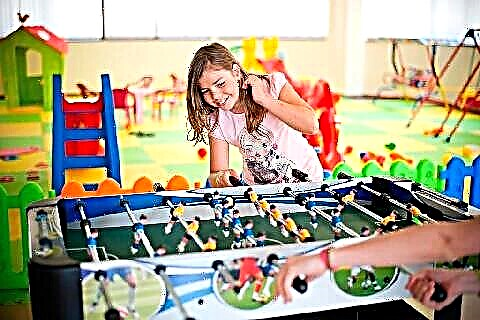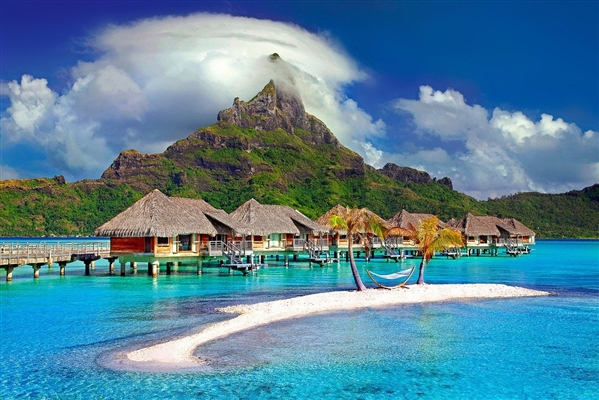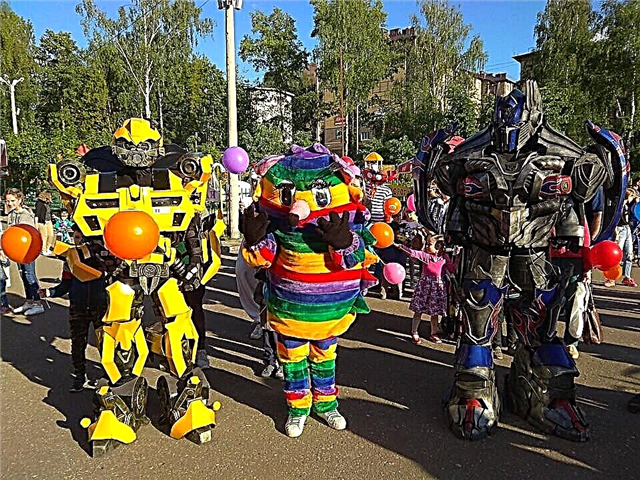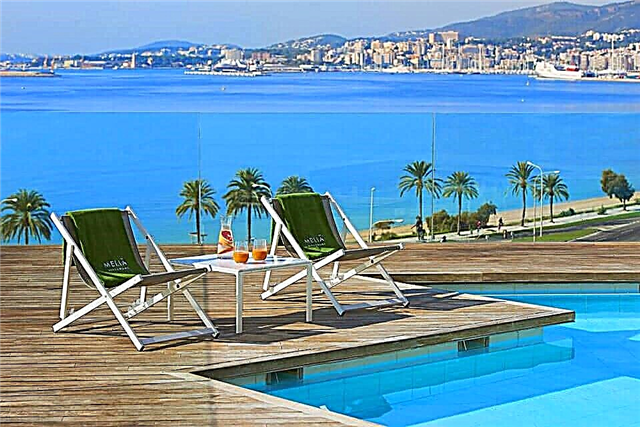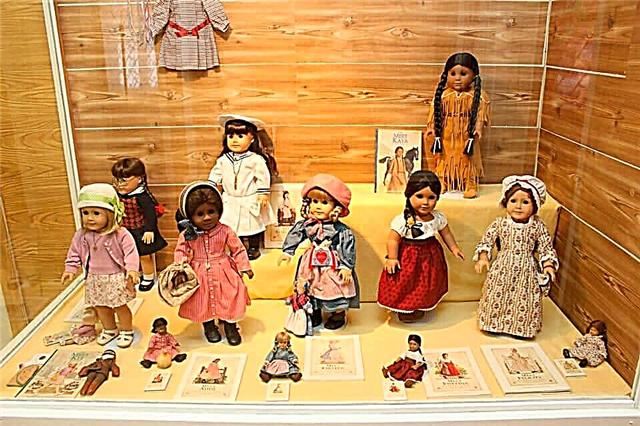Yekaterinburg, being the Ural capital of Russia, is the largest industrial center, but at the same time it continues to attract numerous tourists, thanks to the Ural rock, Bazhov's tales, outstanding playwrights of our time, the best conservatories in the country. But the museums of Yekaterinburg will be able to interest those who have come to this city, since acquaintance with them will allow you to see it from sometimes unexpected angles.
Yeltsin Center

Initially, this center was organized as a non-profit socio-political organization, which was supposed to cultivate the idea of building a rule-of-law state, studying the institution of presidency within the country. Gradually, however, it was redesigned, taking as a basis the numerous materials left by Boris Yeltsin. Their study and the subsequent presentation of the funds of the center takes place in the format of comprehending the political and social phenomena of the nineties. A thematic library is also open.
Hygiene Museum

The idea of creating such an establishment did not arise spontaneously. Interest in this topic in the eyes of the public appeared after the international hygiene exhibition in Brussels, where, among other things, Russian exhibits were presented, which caused a lively response from the European public. The museum was officially opened in 1919, taking the Brussels exhibits as a basis, and also generously supplementing them thanks to the efforts of doctors and orderlies who are interested in popularizing this problem among the population. During the World Wars, the building was badly damaged, but it was restored and even received new premises.
Drum House Museum

A cozy log manor is actually a unique site that has no analogues. The theater museum, whose profile ranges from more than two hundred drums from fifteen countries of the world, is distinctive. Its main feature is interactivity. All local excursions are completely theatrical.
The theater museum is designed in such a way that the guest, walking through its halls, not only learns something new about the cultural space of a certain country, but also independently tries to play - or rather “tap out” - the rhythm in which the colors of a particular culture pulsate ... For example, in the African Hall you will have to pick up maracas and African drums, the Eastern Corner will delight you with Chinese bells, amazing Tibetan singing bowls and even Indian karatals.
You can get special pleasure when you find yourself in the Slavyanskaya Upper Room, where you can plunge into childhood and remember how rattles and Russian spoons sound. Another popular location is the Musical Planetarium called Cosmos. Here we are talking not about spatial, but about temporal specifics: bell drums, theremin and other instruments, the sound of which expresses the pulsation of modernity, are guaranteed to interest. An evening here will definitely help to let go of negativity and leave stress behind the doorstep.
Museum of the history of circus art

It is simply impossible not to notice the building - it is located on the territory of the main circus arena of the city. The Yekaterinburg State Circus is located a few minutes walk from the Geologicheskaya station, which makes it even more attractive in the eyes of tourists who came to the city without a guide. The fund is multifaceted. For the most part, it is represented by real circus props, without which all those enchanting numbers that have been forever inscribed in the history of circus art would have been impossible.
All props are divided into funds in accordance with the type of presentation in which they were used. The opportunity to touch the exhibits makes children especially happy. Many painters, theatergoers, writers and sculptors come here looking for inspiration. And they find him. It also contains materials on the history of the building itself, as well as the circus activities of Soviet artists who more than once conquered Asia and Europe.
The collection of posters is noteworthy, the bright colors of which have not yet faded. In addition to the exhibition halls themselves, the excursion programs also include a survey of a number of circus premises that are working. May be lucky enough to see a troupe rehearsal or animal feeding. A library with unique thematic materials of the last three centuries has been opened.
Museum of military equipment

This military-historical complex is one of the five largest in Russia, successfully competing with similar sites in Moscow, the Northern capital and Saratov. "Military glory of the Urals" - this is the name given to this complex. It is located in the town of Verkhnyaya Pyshma not far from Yekaterinburg itself. The opening of the site is associated with the initiative of several veterans who received material support from the Uralelectromed plant. It took a little over ten years to put together the collections, but the efforts paid off - today there are about two hundred units of military equipment.
Not dummies, but real combat vehicles that brought glory to their country. The collection of rare cars, which would be gladly bought by patrons for private collections, is considered a subject of special pride. Military regalia and awards from various periods make up another hall. Of course, various types of edged weapons and firearms were also not deprived of attention. Self-propelled vehicles, tanks, helicopters - all this is in the open air.
Science Park "Newton"

This scientific amusement park will be interesting for children and adults, who will also be able to discover something new about the work of various body systems, as well as about anatomy and biology in general. There are about sixty exhibits that are interactive. What is Newton Bio? This is creative - both the creators of this place and its guests.
Here you can really "see" exactly how these or those smells affect the human brain, literally "highlighting" various parts of the clusters of neurons. The study of the pupil model, its structure will allow you to look at the world through the "slit", because, in fact, this is how a person perceives reality. The chemical composition of the human body - what could be more commonplace and boring?
No, it's fascinating and completely understandable if you take the trouble to take a closer look at the bizarre exhibit, which was collected from soap, nails and matches. In the Science Park, you can also compete with the whole world without leaving your room. So, you can compare such parameters of a person and other biological organisms as the loudness of the cry, the force of the blow, the length of the jump, etc.
House of the Agafurovs

The revolution of 1917 destroyed many and many, including the richest merchants of the Urals - the Agafurov family, whose dynasty of hereditary merchants stretches from the middle of the nineteenth century. The founder of the dynasty traded in goods that were relevant at that time - tobacco and fruits. The business approach quickly made him a name and gave him the right to receive the title of a merchant of the second guild. The business gradually expanded. The counters were now crowded not only with exotic fruits, but also gold, silver, perfumes, watches, stationery, elite hunting goods, and the counters themselves were scattered across Tyumen, Moscow and even Warsaw.
It is not surprising that such a wealthy family preferred to live no less richly. Two mansions have survived from them in Yekaterinburg, which did not even require reconstruction.Wooden carvings, powerful stone foundations, oriental motifs, an abundance of Muslim symbols, hidden treasures (a gold ingot was found in one of the hiding places) - while everything was being built from stone, the Agafurovs chose wood. And, as it turned out, they did not fail with this.
Museum of the History of Medicine

The squat building made of dark red brick is quite simple, but, nevertheless, an interesting place in the Ural capital. It opened at the end of the twentieth century. In a way, the opening of this complex was inevitable - historically it so happened that in this part of the Urals, the zemstvo doctor was usually the main person in the city. Today, it houses materials covering the history of medicine in the region.
An unusually interesting exposition is devoted to the pharmaceutical business, not only from purely scientific, but also folk positions: the history of local herbalism and the names of the most famous healers of the Urals. There is also a hall with authentic medical equipment. Some devices are perplexing, others are laughter, and still others are terrifying. After all, medicine for a long time remained a game with death. Most of the staff are medical professionals and have previously practiced. It is not surprising that they speak so confidently about the specifics of their work and are always open to questions.
Label Museum

The beginning of the second millennium was marked by the opening of this unique project. The very first exhibition clearly demonstrated the history of the label in the twentieth century. The organizers wanted not only to demonstrate samples of visual advertising from different periods, but to highlight the peculiarities of the graphic culture of the Soviet Union, and then Russia, as well as to popularize national traditions in the field of advertising.
Perhaps, only here you can see with your own eyes such a volume of various labels, packages, leaflets, booklets, announcements created in the Urals. You can visually track trends in the development of graphic strategies in the design of goods of the widest profile: from perfumery to food products. Some Western label designs from the same period are also kept here.
Museum of the Holy Royal Family

The atmosphere of this place is rather onerous. In many ways, the effect is created by the location itself - the courtyard of the Church on Blood, where the family of Nicholas II, later canonized, was shot in the revolutionary years. Many unique relics and personal belongings of those killed are kept here. The path that these artifacts have traveled was sometimes really long. So, some of them were brought from Australia, where some white officers fled at one time.
Others were discovered in the Ipatiev house back in the twentieth century. Some of it goes to the fund only now. For example, recently Tamara Ventura, the daughter of one of the former officers, transferred some of the things of the royal family into the hands of the diocese. The monarch's napkin, the crown prince's blanket, numerous letters from the emperor's sister, perfume bottles that have not evaporated even in so many years, diaries and an icon of the Iberian Mother of God, which was brought to the Urals from Jerusalem itself.
Electoral History Museum
A rather original museum of electoral and political culture was opened quite recently - in 2008. It is difficult to immediately imagine what exactly can be seen in such a museum - it has a rather unusual profile, but more than fifty thousand storage units are devoted to the history of elections in the following countries: Canada, Russia, USA, Great Britain, etc. Among the materials: leaflets, program documents, various documentation, campaign videos, posters, election souvenirs. Much effort has gone into creating a hall that has represented the US electoral system since 1844.
Film Museum

This complex was opened on the basis of the Sverdlovsk film studio, where in the last war years the first film was shot - "The Queen of Chardasha" or "Silva". The film was based on the operetta by Imre Kalman. Later, the film studio was significantly expanded - it was joined by the Novosibirsk studio and the local newsreel studio. So gradually her organization was burdened by a wide profile, numerous awards and eminent luminaries. There are numerous costumes that have appeared on the screens. Guests will be introduced to the tricks of their creation and even help to try them on.
A special item on the program was work with make-up, which even in those days made it possible to shoot scenes amazing in their naturalness with Satan's minions, mythical creatures and guests from the future. The practical part of the excursion includes sounding the film and creating animation with your own hands. Who is ready to give up the opportunity to remain forever in the history of Ural cinema?
Museum "Nevyansk Icon"

This is the first private project in the whole of Russia, which is an unusually rich collection of Old Believer icon painting, most of which belong to the eighteenth century. Named after the largest icon, which today occupies the entire second floor. Many artifacts were unsuitable for demonstration, as they needed almost complete restoration. Even now, there are no more than half of the collected samples in the halls - all the rest are still in the hands of the masters who return them to their historical features.
Many works of eminent Ural icon painters are kept here: Metelev, Brusilovsky, Sazhaev. Crosses, samples of wooden sculpture, frames and books will be of interest not only to deeply religious people, but also to those who are keenly interested in the forms of art traditional for old Russia. After all, their religious component has always been one of the most powerful pillars of culture.
Museum of Vladimir Vysotsky

This complex is striking in its authenticity. The creators did not waste time on trifles such as letters, although they are presented more than fully, but they tried to recreate whole pages from the life of this outstanding person. The silver-lilac Mercedes is already legendary, the reconstruction of the unremarkable Soviet cuisine of the seventies, where Vysotsky spent his time, painfully inhabited and seemingly warm, the room of the Bolshoi Ural hotel, on the contrary, smells of versatility.
Painted walls, a Finnish refrigerator from an apartment on Malaya Gruzinskaya, a floor in a checkerboard tile, a samovar, a rotary dial telephone, a Chinese thermos, a traditional newspaper on the windowsill, a novel-newspaper - from such light strokes an image emerges cast from wax - an amazing fake, frighteningly spiritualized and doomed. Another exhibit is a payphone, you should pick up the receiver and the song “07” will sound.
Museum "Wonderland"

Located in the Literary quarter of the Ural capital. It is located in the house where the Mamin-Sibiryak family lived in the past century. The house did not belong to them - they just rented a room here. This house is rightfully considered one of the rarest examples of Russian wooden architecture in the classicism style. It repeats the appearance of buildings that were erected in the eighteenth century - with carved architraves and sheathed with planks. The museum courtyard is lined with large slabs. They were brought from the old streets of Yekaterinburg when perestroika began there.
The exhibitions consist of a large-scale collection of dolls side by side with illustrated children's books to which they correspond. The excursion material is organized in such a way that literary works come to life in tiny hand-made figurines. Thematic exhibitions of dolls and marionettes from all over the world are often held here.
Museum of the History of Yekaterinburg

Occupies three old buildings located in the historical part of the city. The main building really deserves its status: at different times there was a tenement house, a noble estate, a hotel. Initially, it became the location of the Sverdlov house-museum, whose name sounds very loud in the Urals, but then at the end of the twentieth century it was reorganized.The expositions highlight such components of the history of the city as its foundation as a "mountain kingdom", Tatishchev and Gennin - the founding fathers, legends of the city, local traditions, the Peasant War of the eighteenth century, coats of arms of the city and its lost monuments.

